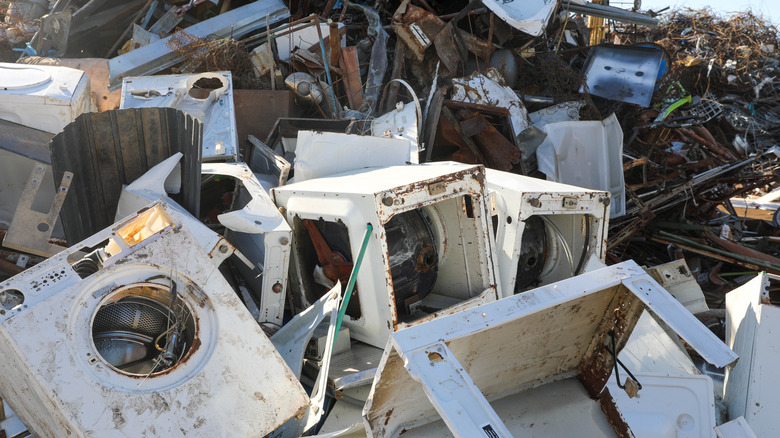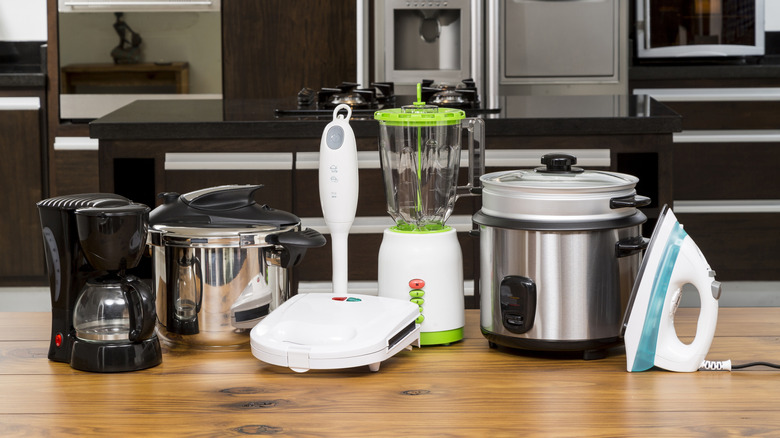The Right Way To Recycle Your Old Kitchen Appliances
Kitchen appliances make our lives easier until they inevitably break (like after something was put in an air fryer that shouldn't have been) or they become outdated as newer, more efficient models are put on the market. When you're ready to toss out the old in favor of the new, proper disposal of kitchen appliances is crucial — but it's not something everyone's familiar with. Old kitchen appliances shouldn't be added to the garbage bin like general trash for pick-up. Ideally, they should be recycled at a proper facility. However, correct recycling practices will vary depending on what you're getting rid of and where you live.
Finding a place that recycles appliances is made easier by resources like Earth911, whose website allows users to type in the appliance in need of recycling and their location to find the nearest disposal facility. If what you're looking for isn't in the Earth911 database, you can call 311 to find recycling details based on your area. This is especially helpful for appliances that use Freon to stay cold, as these will likely need to be picked up or transported to a proper facility.
The weight of appliances is around 5% steel. Steel from appliances accounts for about 10% of all steel recycled in the United States each year, while other materials like glass and plastic can be sent back to manufacturers for reuse. This is one reason why retailers participate in recycling or buy-back programs as an incentive for recycling. If you aren't sure whether a store has one of these programs or what they accept, check online or call ahead.
How to reduce the number of appliances you need to throw out
Many of us will have gone through a small mound of appliances in our lifetime, whether we like it or not. There are ways to reduce our impact and waste, though. One way is to buy fewer appliances. Every once in a while, a new kitchen appliance will be hyped as totally life-changing; driving us to make a purchase in the moment. But I promise, you don't need another toaster.
Another way to reduce waste is to try repairing your appliances before replacing them. It's possible your microwave or fridge just needs a small part replaced. You could even try the old 'unplugging it and plugging it back in' trick. Unfortunately, this method only works some of the time, since replacing small appliances is often more cost-effective than repairing them when the parts aren't readily available.
If you can't repair the appliance, make sure you take care of them so they last as long as possible. Take the time to clean your Nespresso machine and don't stack them on a shelf in the garage to sit for months or years. If it's truly time to replace an old appliance, being informed about proper disposal is the right move. Since only 28 states have laws regarding proper recycling of electronics (19 states have banned electronics from landfills entirely), the responsibility for proper recycling and waste reduction falls on you, the owner and consumer.

